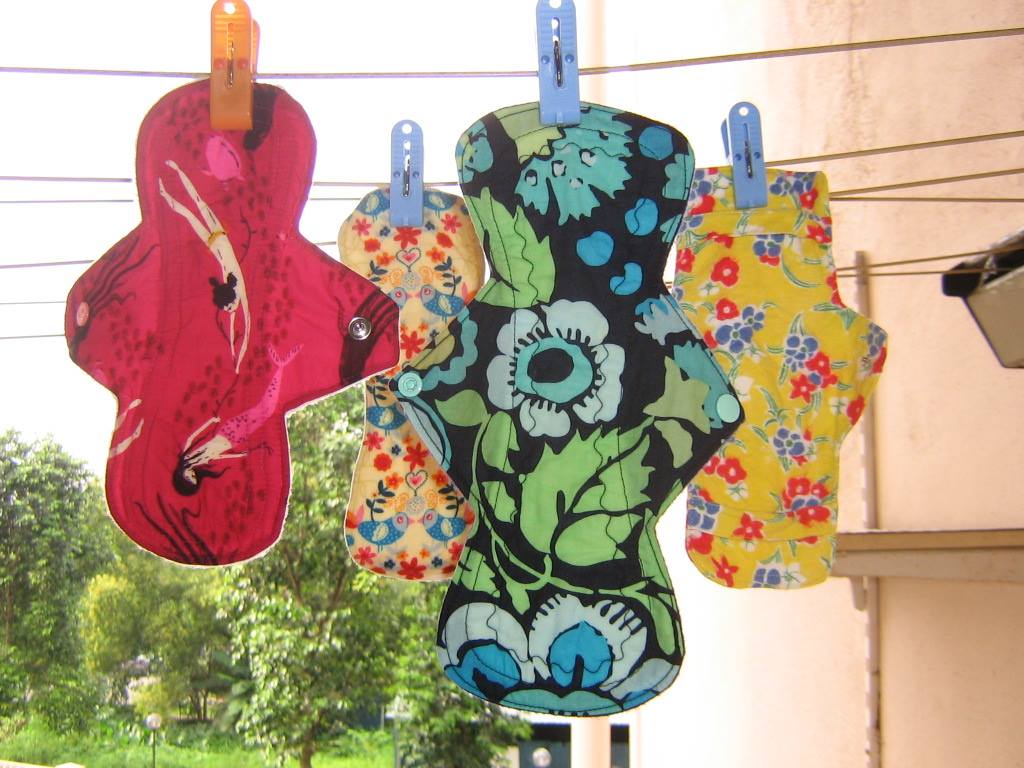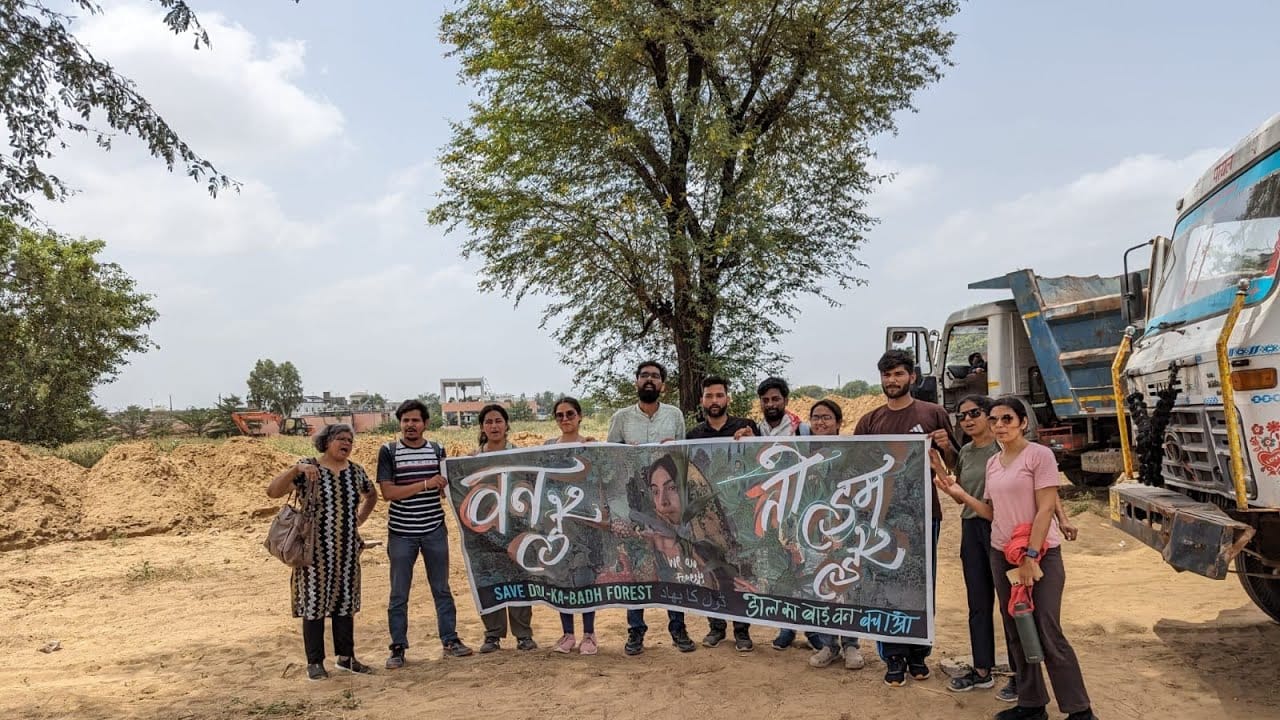Recently, I have been thinking of ways to reduce my carbon footprint due to the constant reports on worsening climate characterised by rising temperatures, waste piling into oceans, and loss of biodiversity. It made me think – if we all share planet Earth, what responsibilities do we each have to reduce our own individual waste?
Limiting single-use products such as plastic bags and utensils is important – but is it enough? While brainstorming with some of my friends on how we can reduce our output of waste, I found that the average woman using disposable menstrual products is expected to produce 150 kg of waste in their lifetime.
This waste takes up to 800 years to decompose and the chemicals used to manufacture them can lead to cancer and other developmental problems. In addition, these products can be difficult to access in rural communities. I knew that there must be a solution to this problem and thus, began my investigation to find sustainable and healthy alternatives.
While it is a matter of a whole other debate whether or not the onus of sustainability should be placed on menstruators, I am someone who can afford to access alternatives, and I decided to do so.

An organisation that I came across was Eco Femme in India. Their goal is to revitalise menstrual practices through the sale of organic cloth pads that are affordable, healthy, and sustainable. These pads can be worn for 3 or more years and are equivalent to 75 disposable pads.
Browsing Eco Femme’s site there were more than 15 variations of products I could have bought to begin my sustainable menstruation journey. But, the DIY (do it yourself) enthusiast in me took over and purchased the Make Your Own Stitching Kit!
Doing hands-on crafts with my friends gives me a lot of pleasure, so I knew that this kit would not only be an enjoyable activity but a way to learn more about menstrual hygiene in an exciting way. I invited some of my friends over and we started the process of stitching our pads.
It took several hours to complete – filled with laughter, moments of confusion, and finally joy when we finished making our first cloth pad. The results were really satisfying!
How to make DIY cloth pads
The Make Your Own Stitching Kit is great for workshops or a hands-on person, looking for a fun challenge. This kit includes pre cut materials to stitch three leakproof cloth pads: a sewing kit including press button, a step by step instruction leaflet, and a chart to get you started on tracking your menstrual cycle.
*Remember before starting that this is challenging and it requires time and patience, but the results are worth it!
The first step is to place the inner layers on top of each other and pass a running stitch through them. Start in the middle of one side and stitch across the layered pad – this will keep your absorbent layers together. Make a knot where you finished the stitch and cut off the remaining thread.
Next, you sew the inner layers to the top layer. Do this by placing the inner layers symmetrically on the pink, pad shaped layer. (You can pin the ends to keep them from moving). Use a small running stitch and follow the shape of the inner layer (The smaller the stitch the less wear will occur during washing). Make sure to keep the knots on the inside where the inner layer is on top of the pink.
Also read: It Is Not On Menstruators Alone: India Has A Long Road Ahead To Sustainable Menstruation
Jatan Sansthan is yet another women’s organisation founded in Udaipur, India, which works on similar ideas. Jatan’s mission spans various sectors, from safe menstruation to COVID relief. Jatan created the UgerProject – Uger meaning ‘new beginnings’ in Mewari – in which reusable sanitary packs are produced
Next, place the leakproof layer on the bottom of the pink layer, so the cotton side is touching the pink flannel and the leakproof PUL (Polyurethane laminate) side is facing outwards. Start stitching near the wing with a running stitch and stay close to the edge. Leave a gap of around 4cm around a straight part of the pad.
Using that gap, turn the pad inside out. Push the pad through the opening and pull it out. Push and rub the fabric to the stitch and pull out the wings. When you have pulled the pad inside out, the pink layer and the cotton layer will be on the outside and its leakproof PUL side will be on the inside.
Next, we will close the gap. Use a small blanket stitch at the gap to give the pad strength. Continue around the pad with this stitch to make the edges flat. If you have any fabric peeking out, push it back inside before continuing the stitching.
Finally, attach the buttons, making sure the buttons are facing the right way so they will join when the wings are closed. Make a few knots to secure the first button to the pink layer wing. Then stitch the second button on the opposite wing on the leakproof layer, making sure that the buttons close before stitching the second button. You should see one button on the pink flannel and the other on the leakproof side of the opposite wing.
(All pictures above are taken from the Eco Femme video)
After finishing the MYO (Make-Your-Own) kit, I wanted to learn more about sustainable menstruation and browsed various organisations striving towards that idea.
I first looked at Eco Femme, the organization from where I bought the MYO kit. Eco Femme is a women-led organisation and as of now, Eco Femme has partnered with 80 NGOs across India and over 150 retailers in 20 different countries.
However, most remarkable to me was that as of 2022 Eco Femme has distributed over 1 million pads, saving over 75 million disposable pads. This program has also provided menstrual education to over 44,000 girls in India, predominantly in underserved areas.
Jatan Sansthan is yet another women’s organisation founded in Udaipur, India, which works on similar ideas. Jatan’s mission spans various sectors, from safe menstruation to COVID relief. Jatan created the UgerProject – Uger meaning ‘new beginnings’ in Mewari – in which reusable sanitary packs are produced.
My journey into sustainable menstruation has been inspiring and life-changing. I learned about the impact of sanitary waste and have begun to use and make cloth pads. I have loved learning about the works of different organisations whose visions span individual, social and ecological concerns. It has opened my eyes to the way I am part of the earth and how my choices matter
Uger products are made with a woman’s health and self-image in mind. Typically, single-use pads contain harmful chemicals. Likewise, cloth pads that are used in marginalised social locations are typically made from old garments that are unhygienic. Consequently, Uger ensures that the cloth pads produced are safe, healthy, and effective.
The UgerProject does not only make pads but also is a growing movement across India. It breaks the silence around menstruation and strives to bring back reusable cloth products. The project has helped women earn an income by stitching pads to support their families in underserved areas. The project has also helped break the stigma of men and menstruation by including men in conversations about menstruation and encouraging boys to make Uger pads.

Asan is a similar organisation that focuses on menstrual cups. Asan’s foremost belief is that menstrual care is a fundamental right. They were created for three reasons: bringing quality menstrual care, making accessible products, and promoting a cleaner environment.
That is why for every menstrual cup that is bought, they donate one to a woman in need. Their goal in doing this is to eradicate period poverty. By partnering with NGOs across the world, they are able to provide training on how to use the cup and spread awareness about menstrual health.
My journey into sustainable menstruation has been inspiring and life-changing. I learned about the impact of sanitary waste and have begun to use and make cloth pads. I have loved learning about the works of different organisations whose visions span individual, social and ecological concerns. It has opened my eyes to the way I am part of the earth and how my choices matter.
Also read: Swachh Bharat Mission Hasn’t ‘Met’ Sustainable Menstruation. And That’s A Disaster | #ThePadEffect
Avani Chaudhry is a student with a passion for writing and research. She enjoys watching movies and reading books and magazines in her free time. She advocates for environmental protection and universal justice




